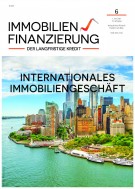Sie befinden sich hier: Home › Immobilien & Finanzierung › Themenschwerpunkte › Aufsätze › RUSSIA: WHAT COMMERCIAL PROPERTY TYPES WILL ATTRACT INVESTORS IN 2021?
Aufsätze
01.06.2021
INTERNATIONALES IMMOBILIENGESCHÄFT
RUSSIA: WHAT COMMERCIAL PROPERTY TYPES WILL ATTRACT INVESTORS IN 2021?

Stanislav Bibik, Foto: Colliers Russia

Dieser Artikel ist Teil unseres Online-Abo Angebots.
Immobilien & Finanzierung, Ausgabe vom 01.06.2021, Seite 257
Aufsätze
4,50 €
1742